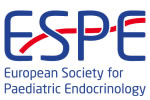hrp0086p1-p891 | Thyroid P1 | ESPE2016
Newborn Screening Program for Congenital Hypothyroidism: Eighteen Years of Experience in Buenos Aires Province, Argentina
Gonzalez Veronica , Esposito Mariela , Vitale Laura , Morin Analia , Fasano Victoria , Pattin Jorgelina , Celia Ferrari , Mariela Dietz , Gustavo Borrajo , Zulma Santucci , Viviana Balbi
hrp0082p1-d2-69 | Diabetes (1) | ESPE2014
Activation of Insulin/IGF1 Signaling Could Increase Hypothalamic Lipid Anabolism in Non-Diabetic IRS2-Deficient Mice
Barrios Vicente , Baquedano Eva , Canelles Sandra , Gonzalez-Rodriguez Agueda , Burgos-Ramos Emma , Chowen Julie A , Frago Laura M , Valverde Angela M , Argente Jesus
hrp0082p2-d1-259 | Adrenals & HP Axis | ESPE2014
Inadequate Cortisol Response to Tetracosactide (Synacthen®) Test in NCCAH Patients, an Exception to the Rule?
Stoupa Athanasia , Briceno Laura Gonzalez , Pinto Graziella , Samara-Boustani Dinane , Flechtner Isabelle , Thalassinos Caroline , Bidet Maud , Simon Albane , Morel Yves , Bellanne-Chantelot Christine , Touraine Philippe , Polak Michel
hrp0082p2-d2-380 | Fat Metabolism & Obesity (1) | ESPE2014
A New Case of Proopiomelanocortin Deficiency
Fuentes-Bolanos Noemi Auxiliadora , Madueno Francisco Jose Tinahones , Gonzalez Luis Castano , Gea Isabel Leiva , Ollero Maria Jose Martinez-Aedo , Lopez-Siguero Juan Pedro
hrp0082p3-d2-685 | Bone (1) | ESPE2014
Autosomal-Dominant Hypocalcaemia, New Clinical Features
Gea Isabel Leiva , Fuentes-Bolanos Noemi Auxiliadora , Munoz-Garach Araceli , Gonzalez Luis Castano , Ollero Maria Jose Martinez-Aedo , Lopez-Siguero Juan Pedro
hrp0084p2-440 | Gonads | ESPE2015
A Novel Androgen Receptor Gene Mutation in Two Patients with a 46, XY Disorder of Sex Development
Fernandez Maria Sanz , Arnao Maria Dolores Rodriguez , Sanchez Amparo Rodriguez , de Leon Esther Gonzalez Ruiz , Cancio Monica Fernandez , Parera Laura Audi
hrp0084p2-469 | Growth | ESPE2015
Major Improvement in Parental Perception of their Children’s Height-Specific Quality of Life after 1 Year of GH Treatment: Our Experience with the QoLiSSY Questionnaire
Gonzalez-Briceno Laura Gabriela , Viaud Magali , Flechtner Isabelle , Dassa Yamina , Samara-Boustani Dinane , Thalassinos Caroline , Pauwels Christian , Beltrand Jacques , Busiah Kanetee , Pinto Graziella , Polak Michel
hrp0094p2-438 | Sex differentiation, gonads and gynaecology or sex endocrinology | ESPE2021
Congenital adrenal hyperplasia in detail: A multicentric and interdisciplinary study in minors with different sexual development
Ignacio Diez-Lopez , Nerea Gonzalez-Temprano , Villalon Flor , Larreina de la Fuente Leire , Cancela Vanesa , Nuñez Francisco Javier , Hernandez Jone Miren
hrp0097p1-264 | Fat, Metabolism and Obesity | ESPE2023
Implementation of the EOSS-P Risk Scale in children and adolescents living with obesity
Gonzalez Diego , Rodriguez Roberto , Garibay-Nieto Nayely , Villanueva-Ortega Eréndira , Aguilar-Cuarto Karina , Pedraza Karen , Fuentes Zendy , Ruiz Alejandra , María Hernandez Ana , Prado Edith , Ruiz Arturo
hrp0095p1-397 | Thyroid | ESPE2022
Molecular Diagnosis of Non-Autoinmune Subclinical Hypothyroidism in Paediatrics
Gonzalez-Llorens Nuria , Antolin Mate Maria , Clemente Leon Maria , Campos Martorell Ariadna , Mogas Viñals Eduard , Soler Colomer Laura , Tomasini Rosangela , Gonzalez-Morla Judith , Murillo Valles Marta , Aguilar Riera Cristina , Casano Sancho Paula , Bosch Muñoz Jordi , Escuer Morell Mercè , Ortigosa Gomez Sandra , Hernandez-Herrero Maria , Feliu Rovira Albert , Camats-Tarruella Nuria , Baz-Redon Noelia , Fernandez-Cancio Monica , Yeste Fernandez Diego



